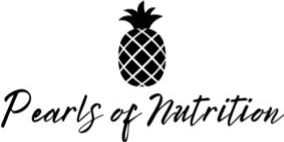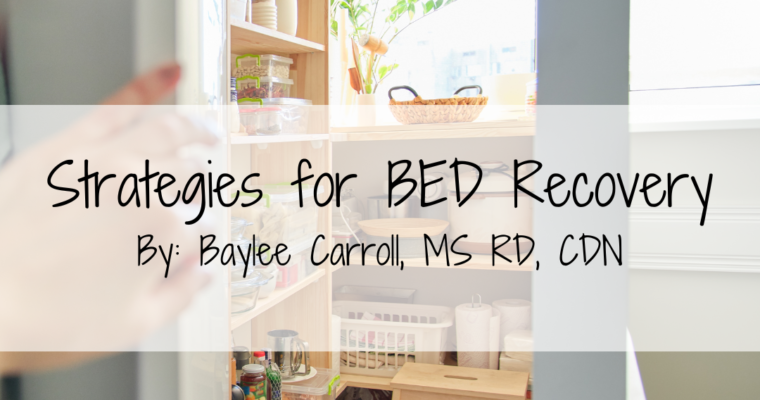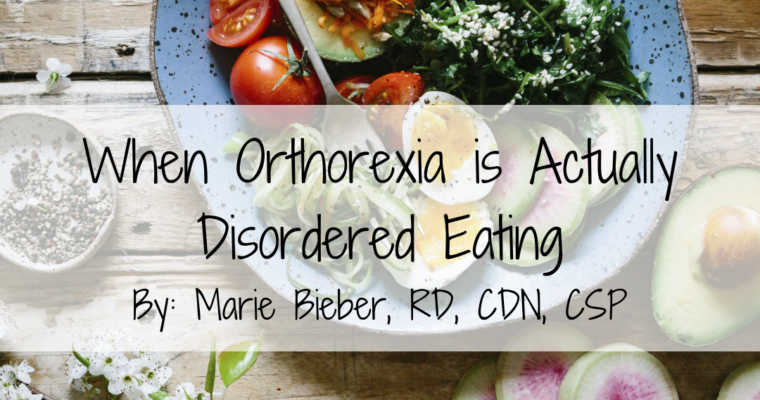
Clients often share that they struggle to identify when they are hungry. This can occur for a number of reasons including disordered eating behaviors. Diet culture normalizes ignoring your hunger cues and encourages individuals to reach for a glass of water or gum to see if the sensation of hunger goes away. This isn’t helpful. Hunger is a normal biologic sensation that we should experience. It is comparable to feeling the urge to urinate, it is a cue of an internal state and a message to us to do something about it.
The good news is, increasing awareness can help you get back in touch with your hunger cues and help you become more aligned with your body. I like to think of it as a two way street where you need to trust your body again and your body needs to trust you that you are going to adequately nourish it.
What are the benefits of listening and honoring your hunger cues? Well, there are many! First, learning to trust your hunger cues sets the stage for healing your relationship with food. In addition, you will experience consistent energy throughout the day and are less likely to experience irritability, fatigue, brain fog. It also allows you to continue on your journey to food freedom and connect with friends and family over meals or try a new food that is offered to you that before you wouldn’t allow yourself to have.
So, where do you start? A good guideline is starting with eating a meal or snack every 3-4 hours. It takes approximately 4 hours for the stomach to empty after a full meal, so you shouldn’t be going any longer than this between meals. Going beyond 4-5 hours may put you at risk to overeat at the next eating opportunity. You can work with your eating disorder Registered Dietitian to identify what appropriate meals and snack sizes look like.
Once you start fueling yourself more consistently the next step is checking in with yourself. Sometimes this can be challenging especially when we are not used to pausing and listening to what our body is telling us or if you have spent years dieting and have ignored or not experienced hunger cues in quite some time. Many client’s I work with struggle with the belief that hunger cues must be super strong to be able to justify eating anything. I am here to tell you that there is another way and you don’t need to feel empty in order to give yourself permission to eat.
I have some clients use a hunger and fullness scale as a guide. This scale is a tool that is used to understand different levels of hunger and what those levels can look like for you. Below is an example from the Intuitive Eating Book:
0 – Painfully hungry. This is primal hunger which is very intense and urgent.
1 – Ravenous and irritable. Anxious to eat.
2 – Very hungry. Looking for a hearty meal or snack.
3 – Hungry and ready to eat, but there is no urgency.
4 – Subtly hungry, slightly empty.
5 – Neutral. Neither hungry nor full.
6 – Beginning to feel emerging fullness.
7 – Comfortable fullness, which feels satisfied and content.
8 – You are beginning to feel a little too full.
9 – Very full, too full. You feel uncomfortable.
10 – Painfully full, stuffed. May feel nauseated.
Sometimes it can be hard to identify where on the hunger scale you are when using numbers. When this happens I encourage clients to instead connect with the descriptions. For example: dizzy and nauseous could be signs that you are ravenous and past the point of hunger. In the future you can connect those feelings with a 0 or 1 on the hunger scale. Hunger is individual and your hunger might not match other people which is totally okay and normal! The main purpose of this activity is giving yourself space to practice checking in with yourself and become attuned to your hunger cues. If you’re still having trouble identifying where you are on the scale, try instead to figure out where you are not. For example, you may recognize you are not uncomfortably full and are therefore not an 8 or above. You may also be able to recognize you are not neutral. This would put you in a 6-7 range. The more often you do this you will begin to recognize the difference between a 6 and 7.
If numbers feel triggering or do not feel safe for you, that is okay too. You can still check in with yourself but instead try connecting with the feelings of comfortable, uncomfortable or neutral. This practice still allows you to pause and get used to checking in with yourself and picking up on cues your body may be sending you.
Next, how do you know if it’s time to eat? Since hunger is so individual, a good starting place is eating a meal when you are feeling around a three on the hunger scale. When you eat a meal when you can identify hunger without it feeling urgent then you are more likely to check in with yourself on what sounds good and eat at an appropriate pace compared to when you wait too long and it is hard to identify what sounds good. Waiting too long to eat a meal can also result in eating at a quicker pace compared to your natural, intuitive pace which can then result in bloating, an upset stomach and not feeling as satisfied with your meal. It’s probably a good time to grab a snack when you are feeling around a four on the hunger scale and identify a slight sensation of hunger. Snacks are meant to hold us over until meal times and give you that pick-me-up feeling. Something to be mindful of is if you find yourself snacking more often throughout the day, you may be hungry for a meal, not a snack.
It is important to acknowledge that there may be times it may not be appropriate to check in with your hunger cues. This can especially be true in the early stages of eating disorder recovery when the goal is symptom interruption and/or weight restoration. During this phase the goal is medical stabilization and you may need to nourish your body even if there are no hunger cues. Additionally, you may need to eat past the point of comfortable satisfaction to provide your body with the necessary amount of nutrition for physiological repletion.
Other times we may not be able to check in with the body are for those that have experienced trauma and it does not feel safe to check in with your body. It will be important to continue to work with your team throughout your recovery. Finally, for those who experience food insecurity may also not be able to respond to hunger cues if there isn’t adequate access to foods. Embrace what foods you do have access to rather than trying to save for later or avoid because of the nutrient content. Continue to work from the mindset of the all foods fit philosophy. If you are having difficulty accessing enough nutrition, please know there are many resources available and we can help work with your team to help locate appropriate resources.
Hunger is a physical and emotional experience. It is normal for it to feel confusing especially when you first start checking in with yourself. It’s okay to not know. It takes time and exploration to be able to get to a point to feel neutral with this experience. Small steps lead to lasting and sustainable goals. Our team is looking forward to continuing alongside you on this journey.



1 thought on “Tuning In to Hunger Cues”
Comments are closed.